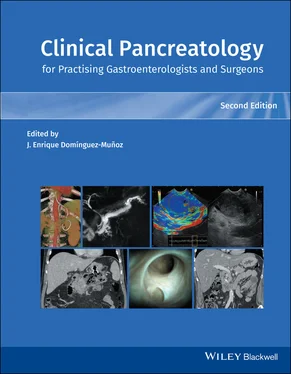Table 1.1 ABC causes of acute pancreatitis.
Source : adapted from Barkin et al. [7].
| A |
Alcohol, autoimmune |
| B |
Biliary, including gallstones, microlithiasis and sludge |
| C |
Congenital: pancreas divisum; Crohn’s disease via inflammation, or ampullary or duodenal obstruction |
| D |
Drugs, toxins (including, smoking, tobacco and marijuana use) |
| E |
Post‐ERCP pancreatitis, eosinophilic pancreatitis |
| F |
Formations: primary cancers (pancreatic ductal adenocarcinoma, especially in patients >50 years), lymphomas, carcinoids, metastatic cancers, small cell lung cancers, renal cancers, melanoma |
| G |
Genetic mutations and polymorphisms: cystic fibrosis, transmembrane conductance regulator ( CFTR ), cationic trypsinogen ( PRSS1 ), serine protease inhibitor Kayal type 1 ( SPINK1 ), and claudin‐2 ( CTRC ) |
| H |
Hypertriglyceridemia and hypercalcemia: hypertriglyceridemia may be associated with metabolic pancreatitis (i.e. elevated glucose, obesity); hypercalcemia associated with hyperthyroidism or iatrogenic infusion |
| I |
Infection: viruses such as cytomegalovirus, mumps and Epstein–Barr virus; ascariasis and Clonorchis sinensis ; bacterial tuberculosis |
| J |
Juxta‐ampullary diverticula: likely mechanism is obstruction |
| K |
Kinetic injury and other trauma, including seat belt injuries |
ERCP, endoscopic retrograde cholangiopancreatography.
The improved detection rate of EUS over MRCP should not be unexpected as EUS has high resolution (0.1 mm), which accounts for its ability to detect small stones (<5 mm), so‐called microlithiasis that is difficult to detect by MRCP [13]. These small stones are considered to be the cause of unexplained pancreatitis in 75% of patients with an intact gallbladder [16]. The clinical question in patients with AP and elevated liver function tests is whether a common bile stone is present. Kondo et al. [17] compared EUS, MRCP, and computed tomography (CT) for detecting common duct stones and found 100% using EUS compared with 88% using either MRCP or CT. The false negatives for MRCP and CT were stones under 5 mm, which EUS would be expected to visualize, as it did [17]. In summary we should utilize a low‐risk diagnostic test to evaluate AP patients with unexplained biliary obstruction. If MRCP is negative, EUS is utilized to determine anatomy and need for simultaneous ERCP if a stone is detected [18].
Metabolic AP represents the association of hyperlipidemia, obesity, and diabetes and is being increasingly recognized and described [19]. Obesity increases the risk of developing more severe AP, with a higher risk of both local and systemic complications and of in‐hospital mortality compared with lean subjects [20]. A body mass index (BMI) over 25 increases the risk of severe AP while BMI over 30 increases risk of mortality [21]. Larger visceral adiposity is a strong predictor of severe pancreatitis [22]. Higher BMI increases the risk of both gallstone‐related AP and non‐gallstone‐related AP [23].
Type 2 diabetes mellitus and obesity are related. Approximately two‐thirds of individuals with non‐insulin‐dependent diabetes mellitus (NIDDM) are obese, which increases their risk of AP [24]. In addition, hypertriglyceridemia (HTG) has been found to be an independent risk factor for AP in patients with type 2 diabetes mellitus [25]. Triglyceride (TG) levels provide the most direct evidence of HTG‐induced AP and should be measured on admission in patients with AP, as TG levels can rapidly decrease with fasting. HTG is frequently unrecognized or unappreciated as a cause of AP as TG levels are measured later in the course of the disease. Amylase level may be normal in patients with AP due to high TG concentration (>500 mg/dl) [26] and therefore lipase levels should be used as these are unaffected by TG level [27].
HTG may be primary or secondary to medications or conditions such as alcohol abuse, pregnancy, and hyperthyroidism. There is a group of drugs that cause AP by elevating serum TGs. These drugs have been reviewed by Elkouly et al. [28] and commonly include clomifene, estrogen products, nadolol, tamoxifen, furosemide, and propofol among others [28]. In addition, HTG is part of so‐called metabolic pancreatitis, comprising obesity, diabetes, and HTG; obesity predisposes to gallstones and thus patients with HTG must be evaluated for cholelithiasis. The level of TG causing AP has been thought to be 1000 mg/dl or greater. However, a prospective cohort study by Pedersen et al. [29] showed that nonfasting mild to moderate HTG (TG ≥177 mg/dl or 2 mmol/l) is associated with a high risk of AP. HTG is associated not only with an increased risk for AP [30] but also with worse prognosis of AP, with significantly increased renal and respiratory failure and shock [31]. These authors also found an increased incidence of systemic inflammatory response syndrome (SIRS) in TG‐associated AP. TG levels in patients who developed organ failure were found to be initially much higher than in patients who did not develop organ failure [32]. HTG‐associated AP accompanied by another etiology (e.g. alcoholism) was found to have a significantly higher frequency of persistent organ failure than with HTG alone. Thus, cofactors may induce and increase the severity of AP. In addition, the rate of persistent organ failure increases proportionally with increasing levels of HTG [33].
Recurrent AP occurs in approximately one‐third of patients with HTG‐associated AP. The goal of therapy is twofold: (i) lowering of the TG level and (ii) removal of precipitating events or coexistent disease. The precipitating events include alcohol abuse, obesity, uncontrolled diabetes mellitus, and pregnancy. Precipitating medication that may increase TG levels (i.e. birth control) should be discontinued. Vipperla et al. [30] found that a precipitating cause was present in 78% of patients with HTG‐associated AP. Peak TG levels exceeding 3000 mg/dl independently predict recurrence of AP, while lower rates of recurrent AP are associated with reduced serum TG levels [34]. An attempt should be made to normalize TG levels in all patients with HTG in order to decrease their risk of recurrent AP. Statins reduce the risk of AP in patients with normal or mildly increased levels of TGs [35].
Genetic mutations, with or without the presence of an environmental factor, can cause AP. The most common mutations involve PRSS‐1 , CFTR , SPINK‐1 , and CTRC , which control trypsin activity in the pancreas. We are finding new mutations in the genes that can result in AP and have learned that some mutations require an environmental cofactor to cause AP [36]. A genetic cause of idiopathic (unexplained) AP should be sought in patients aged below 35 years and in those with acute recurrent idiopathic pancreatitis (ARIP) [37]. In the past, genetic searches were limited to patients who had a family history of pancreatitis, but Jalaly et al. [37] found that a positive family history of pancreatitis did not predict pathogenic genetic variation testing. This is likely explained by the fact that pancreatitis in the family members included in this study was caused by the usual factors (i.e. alcohol, biliary disease). It is important to identify a genetic cause of AP in order to counsel the patient about avoidance of other triggers of AP (e.g. smoking) and to initiate surveillance for the development of exocrine and endocrine insufficiency and pancreatic cancer [36], as well as considering family planning issues ( Table 1.2).
Cystic fibrosis occurs in 1 in 2500 persons of northern European descent [38]. Genetic mutations in the CFTR gene, the cause of cystic fibrosis, are increased in patients with idiopathic acute and chronic pancreatitis as well patients with recurrent acute pancreatitis compared with a control group. Gastroenterologists see adult patients with so‐called atypical cystic fibrosis. This group presents with unexplained acute or chronic pancreatitis and/or exocrine pancreatic insufficiency (EPI). Clinical clues to the presence of atypical cystic fibrosis are the presence of asthma, inability to conceive (due to congenital absence of the vas deferens), and/or chronic sinusitis. Cystic fibrosis risk factors for chronic pancreatitis include other genetic abnormalities predisposing to pancreatitis and pancreas divisum. Genetic testing in adult patients in the twenty‐first century is in a state of flux as many new genetic mutations are being found to be associated with AP [39].
Читать дальше












